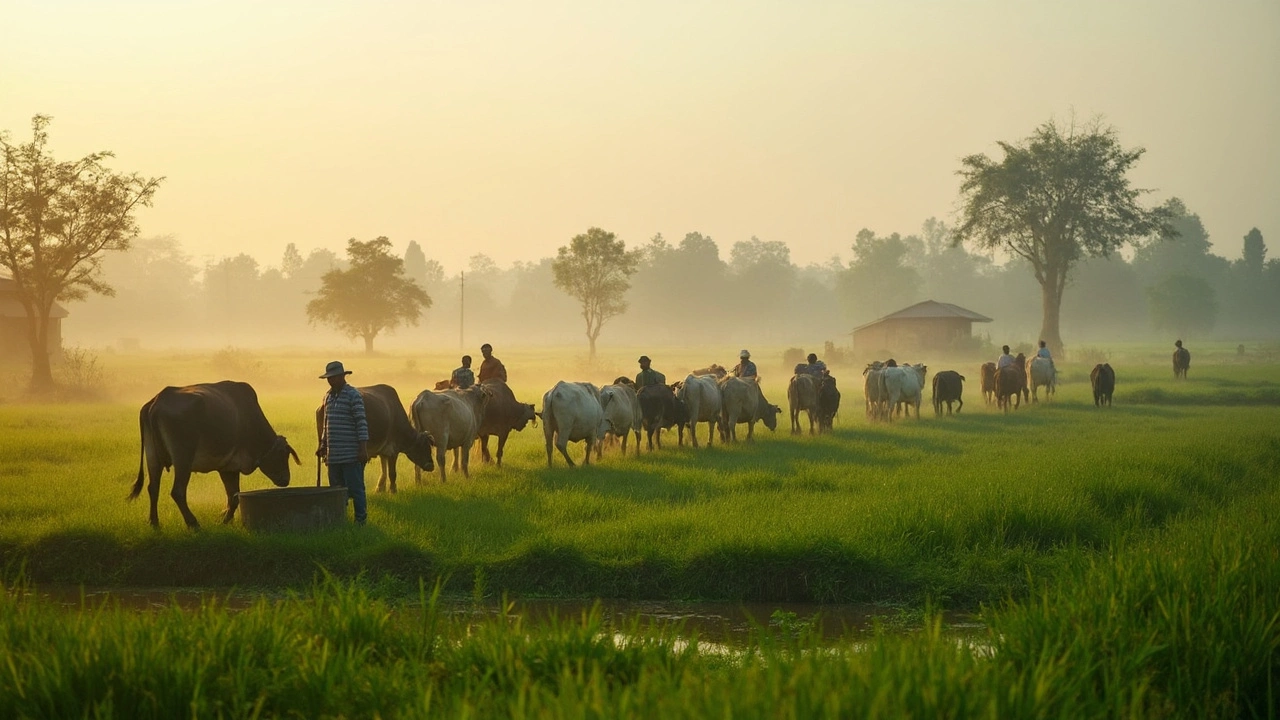Cattle per Acre: Finding the Right Balance for Your Farm
If you own or plan a farm, you probably wonder how many cattle you can keep on one acre without hurting the grass. Too many animals will over‑graze, cause soil loss, and lower milk or meat output. Too few, and you waste valuable land that could boost income. Below you’ll find simple ways to figure out the sweet spot for your situation.
Understanding Grazing Capacity
Grazing capacity is the amount of forage a piece of land can produce in a year. In most parts of India, a well‑managed pasture yields about 2,500 to 3,000 kilograms of dry matter per acre each year. An average adult cow needs roughly 10 kg of dry matter daily, which totals about 3,650 kg a year. Divide the yearly forage production by the cow’s yearly need and you get a basic estimate.
For example, if your acre produces 2,800 kg of dry matter, you can safely support about 0.8 cows per acre (2,800 ÷ 3,650). In practice, farmers round down to 0.5–0.7 cows per acre to give the grass a recovery break.
Factors That Change the Numbers
Several things can swing the cattle‑per‑acre figure up or down:
- Breed size. Smaller breeds like Jersey cows eat less, so you can keep more per acre. Larger breeds like Holstein need more feed.
- Climate. Rainy regions grow more grass, raising the capacity. Arid zones need supplemental feed, lowering the number.
- Soil quality. Fertile soil produces richer pasture, while poor soil may need extra fertiliser or reseeding.
- Pasture management. Rotational grazing, where you move cattle between paddocks, lets grass recover and often doubles the capacity compared to continuous grazing.
- Supplemental feeding. If you add hay or grain, you can keep more cattle, but the cost rises.
Put these factors together and you’ll get a realistic count for your farm. A common rule of thumb in semi‑humid Indian zones is 0.6 to 0.8 cattle per acre for medium‑sized breeds with basic rotation.
Don’t forget to check the land each season. If the grass looks thin or the soil is compacted, reduce the herd size or let the pasture rest longer. A healthy pasture looks green, dense, and bounces back after grazing.
Finally, keep records. Note how many head you had, how much feed you gave, and the pasture’s condition. Over a few years the data will show whether your cattle‑per‑acre estimate is spot‑on or needs tweaking.
By using these simple steps—calculate forage, adjust for breed, climate, and management—you can decide the right number of cattle per acre for profit and sustainability. Healthy grass, happy cattle, and steady income are the result when you get the balance right.





